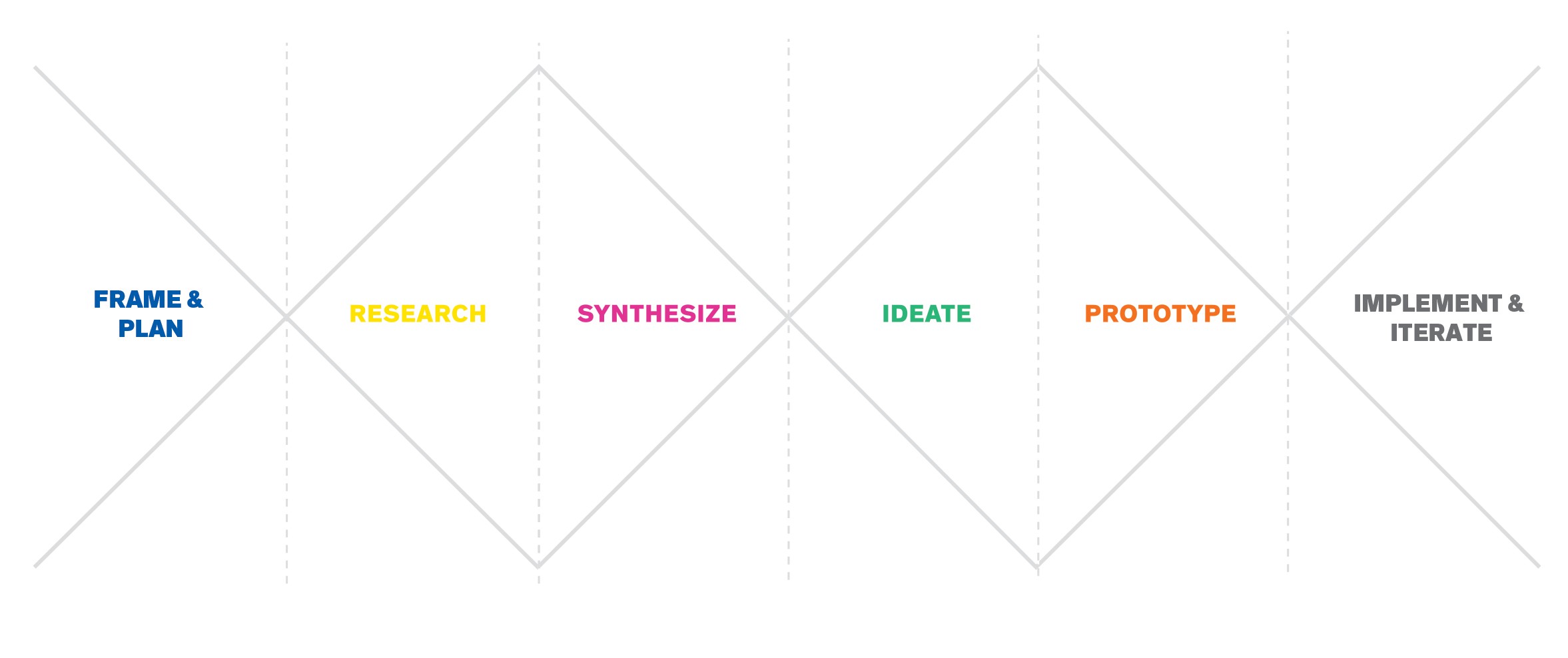Our goal is to shift relationships between people and people, and people and institutions. Our process includes multiple interwoven phases:

1. Frame & Plan
Organize existing scientific data and research associated with the problem. Facilitate discussions to better understand key data and research and to appropriately scope the engagement.
2. Research
Understand the culture and context of the problem by understanding the culture and context of the people involved. Talk to, observe, and learn from stakeholders to locate needs and assets to support.
3. Synthesize
Compile observations and research findings and look for common themes and insights. Embrace unexpected insight, ideas and inspiration. Find appropriate opportunities for intervention.
4. Ideate
Generate as many ideas as possible and defer judgment (no bad ideas). Be visual with idea generation and share openly. Draw concepts, not outcomes. Document the process and routinely combine and refine ideas.
5. Prototype
Make tangible representations of ideas and give them form. Prototype with people to better test assumptions, lower risk, align partners and stakeholders, and reveal potential problems early.
6. Implement & Iterate
Test, iterate and develop prototypes in context. Document and collect feedback to inform strategies and interventions that are more likely to be adopted and align with target outcomes.